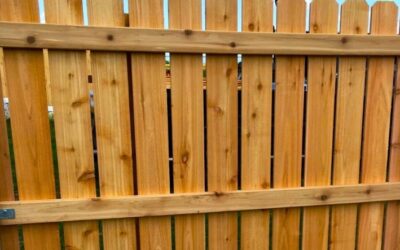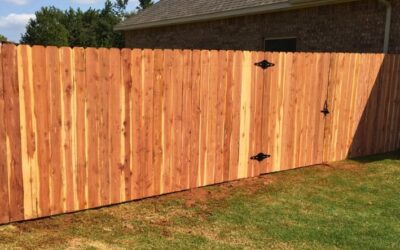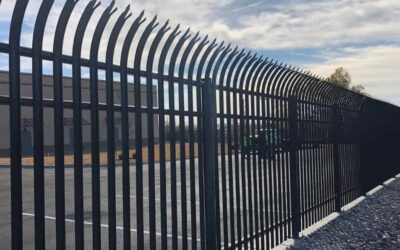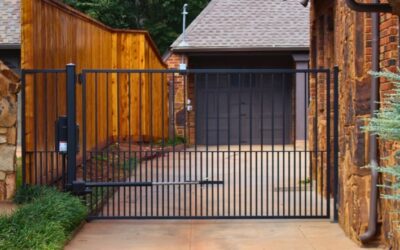Cedar Fence Maintenance Tips for Oklahoma Homeowners

Home » Fence Blog »
Oklahoma Fence Care Tips
Oklahoma homeowners highly value cedar fences for their natural beauty and durability. The wood’s rich tones and aromatic qualities make it a favored choice for rustic and contemporary home exteriors. Naturally resistant to decay and insects, cedar still requires proper care to maintain its appearance and structural integrity due to Oklahoma’s challenging climate.
With extreme weather variations, including hot, humid summers and cold winters, cedar fences are prone to damage from weather-induced expansion and contraction. A consistent maintenance routine is crucial to helping these fences withstand such conditions and extend their lifespan.
This article will outline four essential maintenance tips to protect your cedar fence against Oklahoma’s harsh environmental elements, keeping it beautiful and functional for years.
Instant fence quote
Draw your fence online and get a price in seconds.
Understanding Cedar’s Natural Qualities
Cedar wood is renowned for its inherent resistance to decay, rot, and insect damage. It’s natural oils and extracts protect against the elements and pests. However, despite these natural defenses, cedar wood still requires proper care and maintenance to maintain its integrity and aesthetic appeal.
The Impact of Oklahoma’s Climate on Cedar Fences
Oklahoma’s climate can be challenging for wood fences. With hot summers, occasional heavy rains, and cold winters, cedar fences in Oklahoma are subjected to a wide range of weather conditions. This variation can cause the wood to expand and contract, which may lead to cracks and splits over time.
Importance of Regular Inspections
Inspect your fence regularly for signs of damage, such as cracks, splits, or loose boards. Early detection of these issues can prevent more severe damage, making repairs more straightforward and less costly.
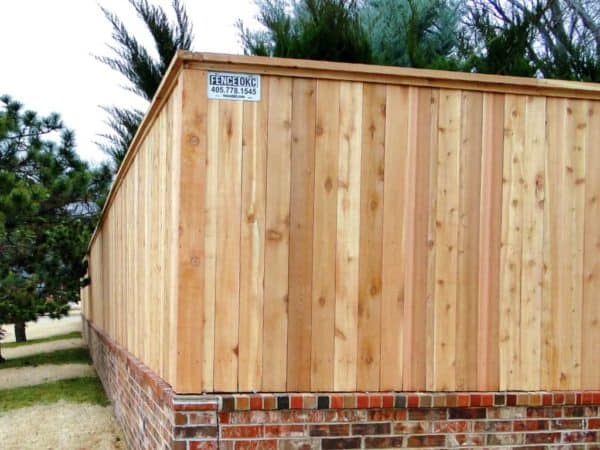
Maintenance Tip 1: Regular Cleaning and Inspection
Regular cleaning and inspection are the first steps in maintaining a cedar fence.
This process involves removing dirt, debris, and other contaminants that can wear down the wood over time.
How to Clean Your Cedar Fence
Regular cleaning keeps your cedar fence looking new and extends its lifespan by preventing the buildup of harmful substances that can accelerate deterioration.
Inspecting your fence as you clean will also help you spot any issues early, allowing for timely repairs that can ward off more significant problems later.
Power Washing Your Cedar Fence: A Note of Caution
While power washing might seem like a quick and effective way to clean your cedar fence, it’s essential to approach this method with caution. Cedar is a softer wood, which means that high-pressure washing can easily damage the surface, stripping away the wood’s natural protective oils and potentially causing splintering and other physical damage.
When to Consider Power Washing
Power washing can be suitable for cedar fences, but only under certain conditions:
- Use Low Pressure: To prevent damaging the wood, use a 25-degree nozzle tip and set your power washer on a low-pressure setting. Typically, a psi (pounds per square inch) of no more than 500 to 600 is recommended for cedar. Adjust the pressure to 1,500 psi as needed, as anything beyond this may splinter the soft cedar wood.
- Keep Distance: To minimize the water impact force, maintain a safe distance between the nozzle and the fence—about 18 to 20 inches.
- Test First: Always test the pressure washer on a small, inconspicuous fence area to ensure it doesn’t damage the wood before proceeding with more extensive areas.
Hand Washing
Given the risks associated with power washing, using a soft brush and a mild detergent solution is often the safer and just as effective method. This approach minimizes the risk of damaging the wood while removing dirt, debris, and other contaminants.
A diluted bleach solution (one part bleach to two parts water) can be used carefully for areas with mildew or more stubborn stains. After applying any cleaning solution, thoroughly rinse the fence with a garden hose to remove chemical residues and loose debris.
Maintenance Tip 2: Apply a Protective Sealant
Applying a stain or protective sealant is a vital step in maintaining your cedar fence. This sealant preserves the wood’s natural oils, which can fade away after extended periods under the sun and rain.
Why Use a Stain or Sealant?
- Protects Natural Oils: The sealant locks in the cedar’s essential oils, preventing the wood from drying out and cracking.
- Shields Against Weather: It forms a barrier against moisture and UV rays, which can damage the wood over time.
Choosing the Right Sealant or Stain
It’s essential to choose a sealant that is made explicitly for cedar and outdoor use. Here’s what to look for:
- UV Protection: Ensure the sealant has UV blockers to protect against sun damage.
- Formulated for Cedar: Choose a product designed for cedar to ensure compatibility and better protection.
- Water-Repellent Features: A suitable sealant should also repel water to prevent rot and mold.
How to Apply Sealant
Applying the sealant correctly is just as important as choosing the right one. Follow these steps for the best results:
- Clean the Fence: Before applying sealant, ensure the fence is clean and dry. This helps the sealant adhere properly.
- Follow the Manufacturer’s Instructions: Use the sealant according to the label. This usually means applying it with a brush or sprayer.
- Regular Reapplication: Generally, you should reapply the sealant every 2-3 years, but this might vary based on the climate in your area and the specific product’s guidelines.
Regularly applying a suitable sealant can significantly extend the life of your cedar fence, keeping it strong and beautiful for years to come.
Fence OKC
Oklahoma’s modern fence company.
Maintenance Tip 3: Prompt Repairs
Fixing problems with your cedar fence as soon as they appear is crucial for keeping it solid and good-looking.
If you ignore minor issues, they can turn into more significant problems that may reduce the lifespan of your fence.
Why Prompt Repairs Matter:
- Prevents Further Damage: Catching and fixing minor issues early can stop them from becoming significant problems.
- Saves Money: Minor repairs are usually cheaper than significant fixes or a complete fence replacement.
- Keeps Fence Looking Good: A well-maintained fence enhances the overall appearance of your property.
Common Repairs Needed for Cedar Fences:
Here are some frequent issues that you should check for and fix right away:
- Loose or Missing Boards: These can compromise the fence’s structure and should be reattached or replaced promptly.
- The fence is Leaning: You should fix a leaning fence promptly. A leaning fence can indicate problems with the fence’s foundation or posts. Realigning and securing the fence immediately is essential to prevent further tilting or collapse.
- Damaged Posts: If fence posts start to rot or break, they must be replaced to stabilize the fence.
- Loose Hardware: Check for any nails, screws, or hinges that have come loose and tighten or replace them as needed.
Steps to Address Common Issues:
- Regular Inspections: Walk around your fence regularly, especially after storms or extreme weather, to look for and assess any damage.
- Tighten Hardware: Use a screwdriver or wrench to tighten loose screws and bolts. Replace any that are rusted or damaged.
- Replace Damaged Wood: Remove any cracked or rotting boards or posts and install new ones that match the rest of the fence.
- Check for Stability: Ensure the fence is stable and secure in the ground. If it wobbles, you might need to reinforce or reset the posts.
Maintenance Tip 4: Vegetation Control
Keeping plants and bushes away from your cedar fence is essential for more than looks; it also helps your fence last longer.
Why Vegetation Control Is Important:
- Prevents Moisture Damage: Plants near the fence can trap moisture against the wood, leading to rot and mold.
- Ensures Sun Exposure: Sunlight can help keep the fence dry and prevent moss and mold growth.
- Avoids Physical Damage: Overgrown plants can push against the fence, causing it to warp or break.
Benefits of Vegetation Control:
Properly managing the plants around your fence has several advantages:
- Keeps Wood Dry: Clearing vegetation allows air to circulate the fence, helping it dry faster after rain and reducing the risk of rot.
- Increases Sunlight Exposure: Sunlight dries the wood and naturally disinfects it, reducing mold growth.
- Prevents Structural Damage: By keeping vines and bushes away from your fence, you avoid the pressure and stress they can cause, which might otherwise lead to cracks and splits in the wood.
How to Manage Vegetation Around Your Fence:
Follow these steps to control the vegetation effectively:
- Trim Plants Regularly: Cut back any bushes, shrubs, or tree branches that touch or hang over the fence. This will reduce shade and moisture retention.
- Remove Climbing Vines: Vines can be particularly harmful as they stick to the wood and retain moisture. Remove them carefully to avoid damaging the fence.
- Use Ground Cover Carefully: Choose ground covers that don’t retain moisture and are easy to control so they don’t spread onto the fence.
- Create a Buffer Zone: If possible, leave a small gap between your fence and any garden beds or landscape features to prevent direct contact with plants.
Fence Post FAQs
Some of the most frequently asked questions about cedar fence care from our website visitors.
How often should I clean my cedar fence?
It is recommended that you clean your cedar fence at least once a year to remove the buildup and inspect it for potential damage.
Can pressure washing damage a cedar fence?
Yes, pressure washing can be too harsh for cedar and may strip away its natural oils. To avoid damaging the wood, start with a very light pressure. However, it is better to use a gentle cleaning method.
What is the best time of year to apply a sealant to a cedar fence?
The best time to apply sealant is during the dry season, typically in early spring or fall when temperatures are mild and rainfall is minimal.
What if I find signs of insect damage on my cedar fence?
If you notice signs of insect damage, such as holes or sawdust, consult a professional to assess the situation and recommend an appropriate treatment.
How often should I apply a sealant to my cedar fence?
Reapplying sealant should generally be done every 2 to 3 years, but this can vary based on your local climate and the specific type of sealant used. If your fence is exposed to harsher weather conditions, such as more frequent rain or intense sun, you might need to reapply the sealant more often.
Is it necessary to stain a cedar fence, or can I leave it natural?
Staining a cedar fence is optional. Leaving cedar untreated can also be aesthetically pleasing as it ages to a silver-gray finish. However, a stain can enhance the wood’s natural colors and provide additional protection against UV rays and moisture. Decaying or leaving the cedar naturally depends on your preference and desired maintenance level.
Maximize Your Cedar Fence’s Lifespan with Effective Maintenance Strategies
Keeping a cedar fence in good shape in Oklahoma means doing a few essential things regularly.
You should clean your fence often, apply a protective sealant, fix any problems as soon as they appear, and prevent plants from growing too close to it.
Sticking to these maintenance tasks can make your cedar fence last longer and look better. This ensures that it not only adds beauty to your property but also continues to serve its purpose effectively.
Taking care of your cedar fence in these ways will help protect your investment and keep your fence looking great for years.
Are You Considering a New Fence?
Fence OKC is the leading choice for those looking into fencing solutions in Oklahoma.
This veteran-owned business has established itself as a community cornerstone since 2011. It is known for being one of Oklahoma’s most reliable and well-reviewed fencing contractors.
Our commitment to excellence is evident in the expert craftsmanship we provide and the numerous positive reviews from satisfied customers. Fully licensed in Oklahoma, Fence OKC promises to offer thorough commercial and residential fencing services customized to meet your style and functional needs.
Choose Fence OKC for a reliable, high-quality fence that stands the test of time.
Contact us at (405) 778-1545 or complete our secure form below.
Let's Have a Conversation
Church Fence Installation in OKC
Oklahoma Church Fence Installation In Oklahoma City (OKC), where church communities flourish and buildings serve as sanctuaries, fellowship centers, and community hubs, ensuring safety and a welcoming presence is paramount. Church fence installation...
Which Fence is Best for Oklahoma High Winds?
What Type of Fence Works Best in Oklahoma's High Winds? Strong, persistent winds are a defining characteristic of Oklahoma's weather, often leading to significant fence damage. Whether dealing with gusty storms, fallen debris, or the notorious...
Why Cedar Fences Are Perfect for Oklahoma Properties
Why Cedar Fences Are Ideal for Oklahoma Yards Cedar fences have long been a staple of beautiful and functional outdoor spaces. For homeowners in Oklahoma, where the climate varies dramatically between scorching summers and icy winters, cedar fences...
What Is a High-Security Fence?
An Introduction to High-Security Fencing In today’s world, where safety is a top priority, a high-security fence installation is the perfect solution for protecting properties against unauthorized access and potential threats. Whether for...
5 Benefits of Installing a Chain Link Fence in Oklahoma
5 Advantages of Installing a Chain Link Fence in Oklahoma Chain-link fences are among the most popular and practical solutions for securing property. They offer unique advantages for Oklahoma residents and are tailored to their environment,...
5 Signs It’s Time to Upgrade Your Automatic Gate System
5 Reasons to Update Your Driveway Gate In today’s world, your home or business’s security is only as strong as your entry points. Automatic gate systems play a significant role in enhancing property security, ensuring smooth access, and adding a...
WHAT WE DO
PROFESSIONAL FENCE CONTRACTOR IN OKC
For over a decade, Fence OKC has proudly stood as Oklahoma City’s go-to modern fence company, dedicated to excellence in all aspects of fencing. Whether you’re looking to enhance the security or elevate the aesthetics of your property, our expertise has been shaping neighborhoods and fortifying businesses since 2011.
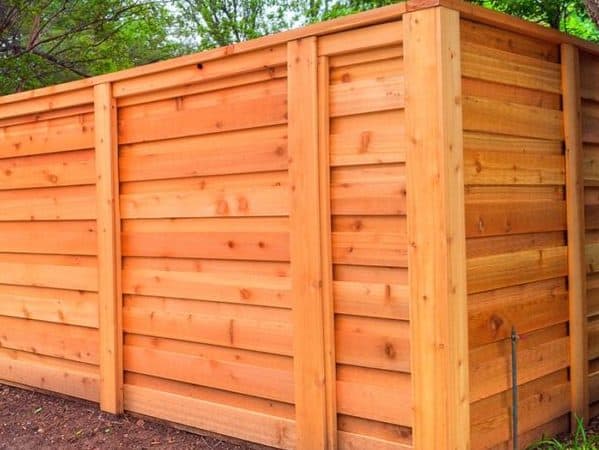

RESIDENTIAL FENCE
We specialize in custom cedar fence installation in Oklahoma, especially wood privacy and picket fencing. We also offer hand-built cedar fences built on-site and by the “stick.”
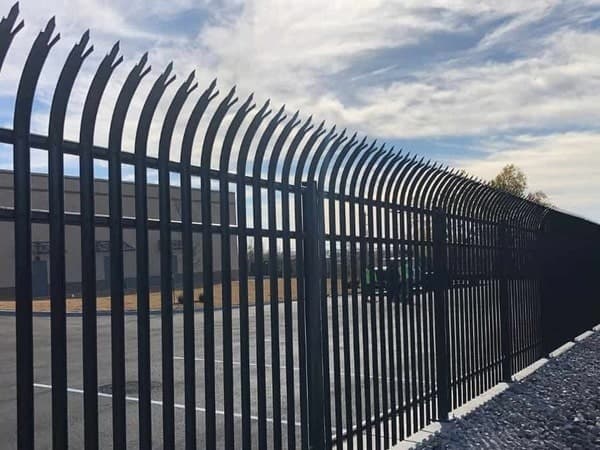

COMMERCIAL FENCING
Fence OKC prides ourselves on professionalism and attention to detail. We can install any kind of commercial fence from high security fence to heavy duty wrought iron fencing.
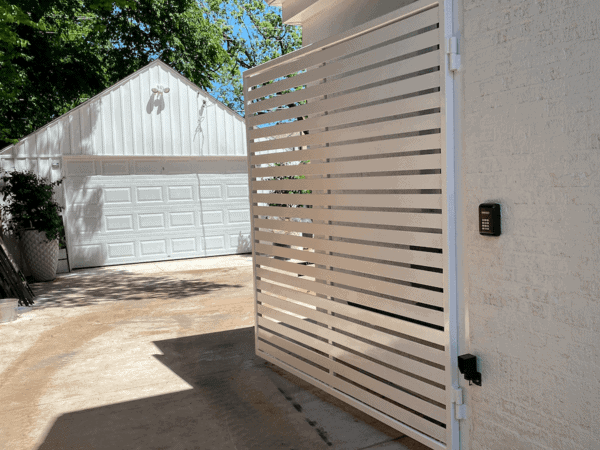

AUTOMATED GATES
Fence OKC is among one of the few licensed providers in Oklahoma for automated gate installations, repairs, and manufacturing, catering to commercial and residential needs.
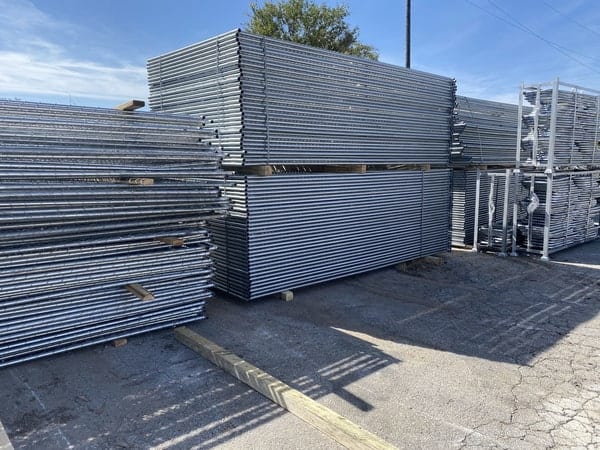

TEMPORARY FENCE PANELS
Temporary chain link fence panels are favored for construction zones, events (both indoor and outdoor), and sports gatherings, especially when installing in-ground posts isn’t feasible.


ACCESS CONTROL SYSTEMS
Protect your residential or commercial property with our state-of-the-art gate service and access control systems. Licensed and bonded, we can help with your security concerns.
Need Some Help?
Should you need help or have any inquiries, the team at Fence OKC stands ready to assist. We are dedicated to addressing all your fencing concerns in Oklahoma City, ensuring you choose the ideal fence for your needs.
OKLAHOMA CITY, OKLAHOMA
LOCATION AND SERVICE AREAS
Located in the heart of Oklahoma City, Fence OKC proudly serves a broad spectrum of areas, ensuring every corner of our community benefits from top-tier fencing solutions. We've got you covered whether you're near or a bit further out.


Fence OKC Service Areas
Edmond • Oklahoma City • Norman • El Reno • Moore • Yukon • Mustang • Piedmont • Guthrie • New Castle • Blanchard • Tuttle • Choctaw • Harrah • Nichols Hills • Arcadia • Jones • Newalla • Gallardia • Del City • Tulsa • Noble • Midwest City • Kingfisher • Stillwater • McCloud • Bristow • Sapulpa • Broken Arrow • Sand Springs • Owasso • Enid • Weatherford • Hinton • Elk City • Clinton • Woodward









